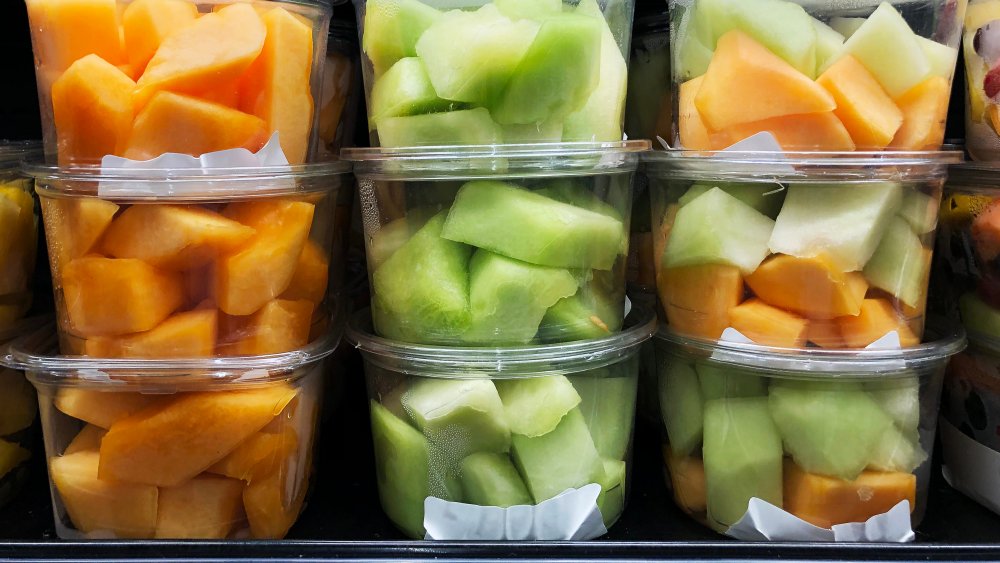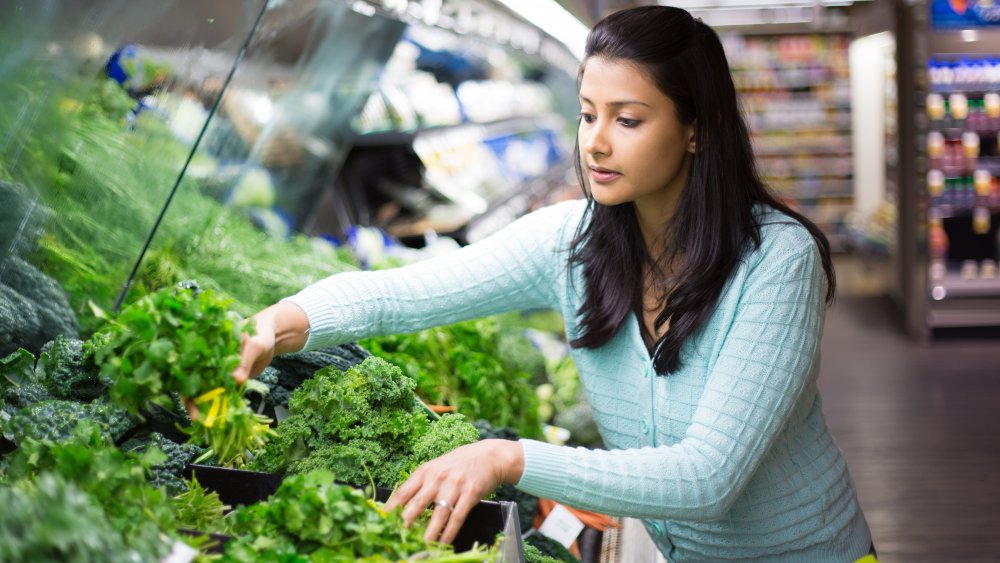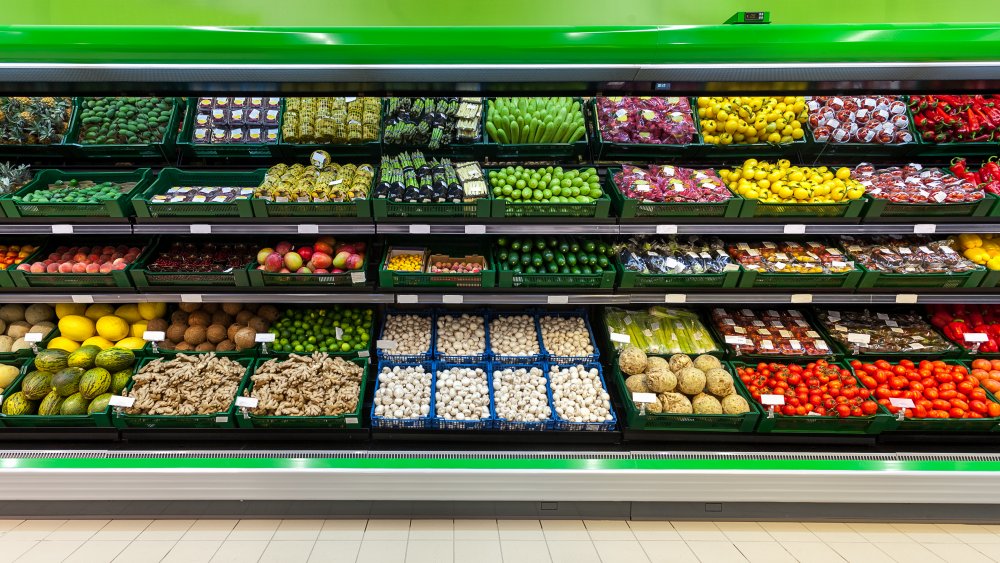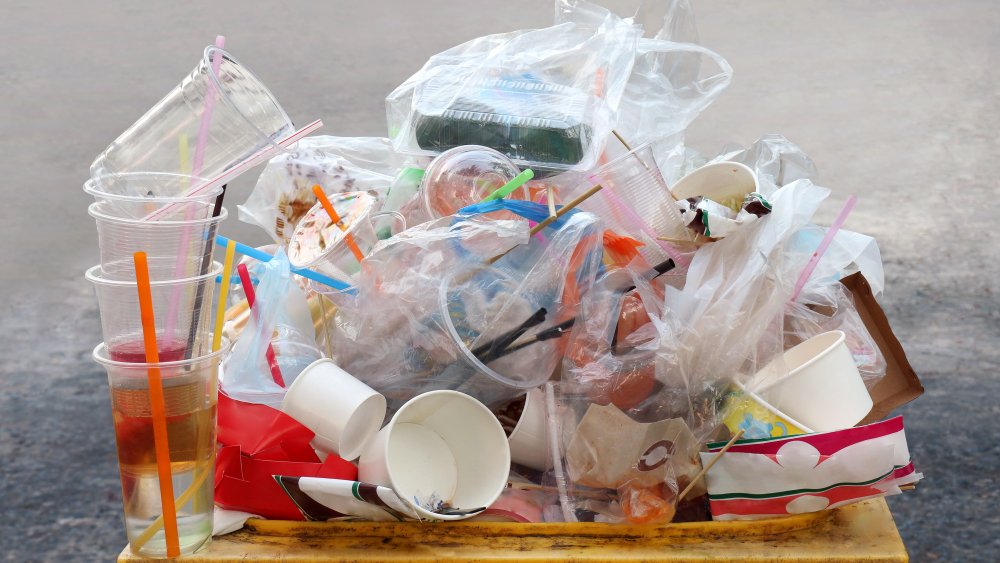Why Buying Pre-Packaged Food At The Grocery Store Is A Big Mistake
We've all been there. You're walking through the produce, checking out the big round green watermelons and the perfectly-shaped purple onions, and then your gaze is diverted to a section that has these same items — but they are already cut up and packaged in little plastic containers, just for you. No mess, no hassle, and the time saved not cutting it up yourself would allow you to do one of the other million items on your to-do list. Only, in order to determine whether or not you should buy these convenience foods, you're going to have to go back to high school economics and use cost-benefit analysis to determine if it is in your household's best interest. Does the benefit outweigh the price of purchasing these foods or vice versa?
In 2018, food expenditures represented the third-largest amount of money each household annually spends, with housing being the most expensive and transportation being the second most expensive (via Bureau of Labor Statistics). This spending on food is up 2.5 percent from the previous year and is only expected to continue to rise in the near future.
But no one wants to waste food or money. It's all about smart shopping. Smart shopping means you need to weigh the cost benefit of buying pre-cut packaged foods with the time you would have to spend doing it yourself, and once you realize how much you can save by slicing and dicing at home, you might think twice about this grocery store expenditure. Just how much more expensive is pre-cut produce?
The cost of pre-cut and packaged convenience foods
American culture is all about convenience. We're busy and we want things to help make our time in the kitchen less frantic when it comes to meals. From food delivery services to chopped up vegetables and fruits, what you are really buying is time. But can your pocketbook afford that purchase? Not too long ago, Vice actually compared prices of buying a whole food and its prepackaged version, and what they found might surprise you.
Chopped-up versions of vegetables and fruits sell for as much as three times more than when you pay when you buy them whole and cut them up at home. Comparing romaine lettuce, they found that buying a head of this leafy green was just $1.99, compared to purchasing a 22-ounce bag of hearts for $3.99. Broccoli bought whole was $2.99, a pound while chopped florets were selling for $4.99 a pound. And think twice about that red onion. A whole red onion rang in at 49 cents a pound at Walmart while the diced version was $4 a pound. Vice estimates that you could shave $100 or more a month off your monthly grocery bill, just by buying the whole version of your fruits and vegetables and chopping them up yourself.
Longer shelf life for whole fruits and vegetables
Moreover, when you buy pre-cut prepackaged fruits and vegetables, you lose a lot of control. You don't know how they've been cleaned, for starters, and by virtue of cutting them up, their shelf life has been sliced in half, and they've already lost some of their nutrients. The exterior rinds and peels of fruits and vegetables serve as protection from a number of elements, including those that break down vitamins and sugars in their cell walls. Heat, oxygen, and light all contribute to both the nutritional content of a piece of fruit or vegetable, as well as how long it will last in your refrigerator or on your countertop.
According to the experts, antioxidants like vitamin C take the biggest hit because they react with oxygen. Once produce has been peeled or chopped up and the fleshy inside is hit with air, there is a reduction in the antioxidant vitamins it contains. Additionally, slicing up your fruits and vegetables increases their respiration rate. The respiration rate, which is when the sugar breaks down and carbon dioxide is released, contributes to how quickly food begins to brown and ultimately rot. Buying whole versions allows you to control the portions you cut up, when you consume it, and how it is cleaned (via Very Well Fit).
It helps the environment
Becoming a chop master with your kitchen knives is not just a great way to show off and impress dinner guests — it is also better for the environment. All those plastic containers and bags that are used to package up our convenience foods may save us time, but it is hurting our environment with the excess waste it creates. National Geographic estimates that 91 percent of all plastics are not recyclable and that mass production of plastic has created a whopping 8.3 billion metric tons of it. What is even scarier is that the majority of it ends up in the trash where it takes 400 years for it to break down. Whole fruits and vegetables come in their own packaging via peels and skins that are naturally biodegradable.
The cost benefit of purchasing pre-cut prepackaged vegetables and fruits may benefit us personally, but it certainly doesn't help Mother Nature or future generations. Buying foods in their whole form cuts down on our carbon footprint and that benefits everyone.



